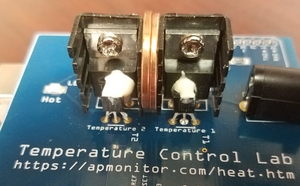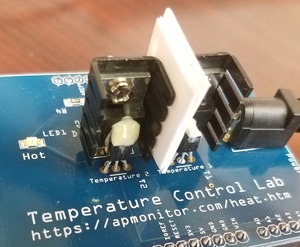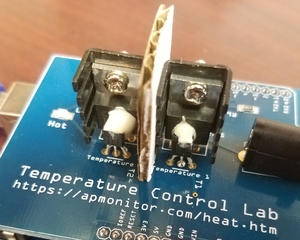Data Science with the TCLab
These modules are intended to help you develop data science and machine learning skills in Python. Beginning Python short modules are available for programmers with no prior programming experience. As with the beginning modules, these modules have video tutorials for each exercise if you have questions along the way. One of the unique things about these modules is that you work on basic elements and then test your knowledge with real data exercises with a heat transfer design project. You will see your Python code have a real impact by designing the materials for a new product.
There are 12 learning modules. If you are just starting Python, try the Begin Python Modules first.
One of the best ways to start or review a programming language is to work on a project. These exercises are designed to teach data science Python programming skills. Data science applications are found across almost all industries where raw data is transformed into actionable information that drives scientific discovery, business innovations, and development. This project is to determine the thermal conductivity of several materials. Thermal conductivity is how well a material conducts or insulates against heat transfer. The specific heat transfer project shows how to apply data science to solve an important problems with methods that are applicable to many different applications.
Objective: Collect and analyze data from the TCLab to determine the thermal conductivity of three materials (metal, plastic, and cardboard) that are placed between two temperature sensors. Create a digital twin that predicts heat transfer and temperature.
To make the problem more applicable to a real situation, suppose that you are designing a next-generation cell phone. The battery and processor on the cell phone generate a lot of heat. You want to make sure that the material between them will prevent over-heating of the battery by the processor. This study will help you answer questions about material properties for predicting the temperature of the battery and processor.
Topics
There are 12 lessons to help you with the objective of learning data science in Python. The first thing that you will need is to install Python to open and run the IPython notebook files in Jupyter. There are additional instructions on how to install Python and manage modules. Any Python distribution or Integrated Development Environment (IDE) can be used (IDLE (python.org), Spyder, PyCharm, and others) but Jupyter notebook or VSCode is required to open and run the IPython notebook (.ipynb) files. All of the IPython notebook (.ipynb) files can be downloaded at this link. Don't forget to unzip the folder (extract the archive) and copy it to a convenient location before starting.
1️⃣  Overview -
Overview -  Colab Notebook
Colab Notebook
2️⃣  Data Import and Export -
Data Import and Export -  Colab Notebook
Colab Notebook
3️⃣  Data Analysis -
Data Analysis -  Colab Notebook
Colab Notebook
4️⃣  Visualize Data -
Visualize Data -  Colab Notebook
Colab Notebook
5️⃣  Prepare (Cleanse, Scale, Divide) Data -
Prepare (Cleanse, Scale, Divide) Data -  Colab Notebook
Colab Notebook
6️⃣  Regression -
Regression -  Colab Notebook
Colab Notebook
7️⃣  Features -
Features -  Colab Notebook
Colab Notebook
8️⃣  Classification -
Classification -  Colab Notebook
Colab Notebook
9️⃣  Interpolation -
Interpolation -  Colab Notebook
Colab Notebook
1️⃣0️⃣  Solve Equations -
Solve Equations -  Colab Notebook
Colab Notebook
1️⃣1️⃣  Differential Equations -
Differential Equations -  Colab Notebook
Colab Notebook
1️⃣2️⃣  Time Series -
Time Series -  Colab Notebook
Colab Notebook
They give the skills needed to work on the final project. In the final project, metal coins, plastic, and cardboard are inserted in between the two heaters so that there is a conduction path for heat between the two sensors. The temperature difference and temperature levels are affected by the ability of the material to conduct heat from heater 1 and temperature sensor `(T_1)` to the other temperature sensor `(T_2)`.



You may not always know how to solve the problems initially or how to construct the algorithms. You may not know the function that you need or the name of the property associated with an object. This is by design. You are to search out the information that you might need using help resources, online resources, textbooks, etc.
You will be assessed not only on the ability of the program to give the correct output, but also on good programming practices such as ease of use, code readability and simplicity, modular programming, and adequate, useful comments. Just remember that comments, indentation, and modular programming can really help you and others when reviewing your code.
Temperature Control Lab
The projects are a review of all course material with real data from temperature sensors in the Temperature Control Lab (TCLab). The temperatures are adjusted with heaters that are adjusted with the TCLab. This lab hardware is also used in the Process Dynamics and Control Course and the Dynamic Optimization Course.

Support
We would love to hear any feedback or problems you would like to send us! We are always trying to improve these modules and would like to hear about your experience. We can be contacted at support@apmonitor.com or leave a comment on one of the YouTube videos.



